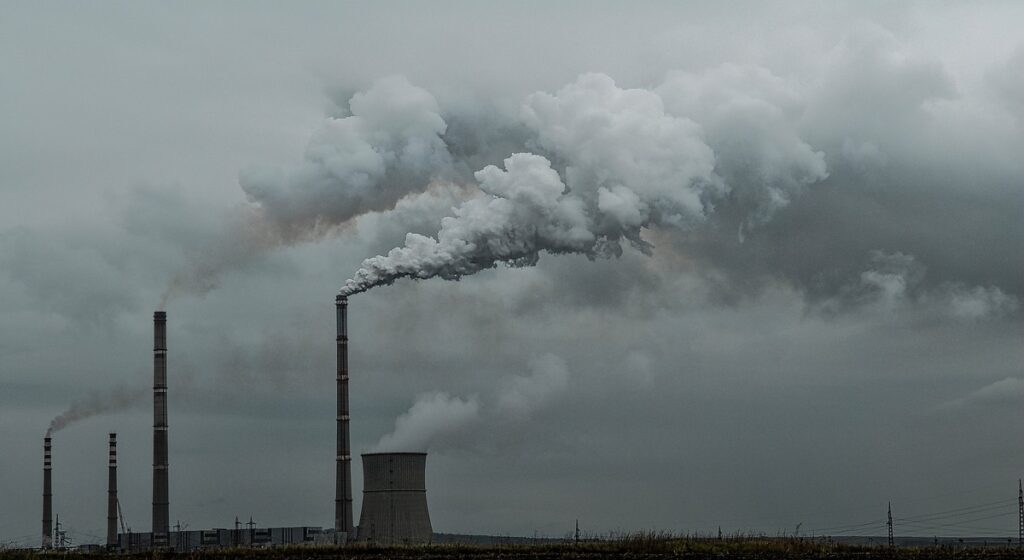With the coronavirus pandemic still raging strong and economies across the world struggling, the omnipresent threat of climate change may have slipped your mind. And while no one wants another catastrophe to worry about, the impending climate crisis has to be dealt with — lest a COVID-sized disruption becomes a regular occurrence.
This article is a continuation of the argument laid out in my previous article: that the global pause forced upon us by the novel coronavirus presents the world with a tremendous opportunity to rethink the ways we live our lives and push for a more green future. In this piece, I will examine the climate policies of the world’s future top greenhouse gas emitters, China and India, and analyze what they are (and aren’t doing) to combat climate change.
While developed countries are largely responsible for the climate crisis — they’ve contributed 79 percent of historical carbon emissions — emissions are levelling off or dropping in Western Europe and the United States. Energy-related CO2 emissions fell by 3.2% in advanced economies in 2019, with Germany leading the way with an 8% decline. As a whole, the European Union saw a 5% drop in energy-related emissions, while the United States witnessed a 2.9% fall.
In contrast, non-western countries are poised to contribute a lot more (or already have). In the last 40 years, China has experienced unprecedented economic growth and a consequent sixfold increase in energy-related CO2 emissions, making it a leading global emitter. Approximately 850 million Chinese citizens have been lifted out of poverty in under fifty years, increasing spending and driving an immense economic expansion. Indeed, between 2000 and 2018, the annual growth rate of private consumption in China was 8.3%, four times higher than the United State’s over the same time span. China’s GDP per capita is still lower than that of the United States, meaning they have more room to ramp up consumption. This will likely be accompanied by a further increase in emissions if no aggressive action is taken.
China isn’t an outlier. India, another nation with over a billion people, is also crucially important for the world’s collective effort to battle the climate crisis. Will the country follow China’s lead and prioritize coal-fueled rapid growth or will they continue to invest in rapidly deployable renewable energy and become a global leader for environmental progress? So far, no state has managed to lift huge segments of their population out of poverty without a corresponding surge in emissions.
Thus, while the climate policies of the European Union, the United States, and Australia garner much global attention, it’s vital to focus on developing, emerging and non-Western countries, as they have an increasingly important impact on our collective future.
China: Potential Plagued by Inconsistency
Climate Action Tracker, which provides up-to-date information and analysis on state climate policies, rates China’s current climate action as “highly insufficient.” This means that their nationally determined contribution — essentially the Paris Agreement climate targets each signatory state sets — is inconsistent with preventing warming below the 2ºC threshold set out by the landmark climate accord. If all other government NDCs were similar, it would lead to warming between 3ºC and 4ºC by 2100.
Although there were signs that emissions were going to level off in the mid-2010s, increases in fossil fuel consumption have helped to drive further emissions increases in the last three years. Additionally, China has increased its ability to burn coal, bringing the total capacity under construction to 245 GW. For context, that’s the energy generated by 412 wind turbines. China has also supported coal development outside of its domestic borders. In it’s NDC, the nation has pledged to generate 20% of electricity from non-fossil fuel sources and to hit peak emissions by 2030.
While this might seem confusing, the World Trade Organization and other international bodies still consider China a developing nation and, as such, it isn’t expected to hit peak emissions yet. However, while China’s current policies are on track to meet its NDC goals, they still aren’t compliant with limiting warming to 2ºC.
Chinese leadership has tried to frame itself as being the leaders on climate change in absence of American involvement, but they’re inconsistent with their ambitions. While they have implemented policies to promote renewable energy domestically and are the largest developer of renewable energy worldwide, the National Energy Administration halved the budget for solar project subsidies and got rid of subsidies for offshore wind just this year.
Despite this, the country can still emerge as a global climate leader. According to a recent Forbes article, China “could reliably run its grids on at least 62% non-fossil electricity generation by 2030, while cutting costs 11% compared to a business-as-usual approach” as the price of renewable energy falls. China is currently developing it’s 14th Five Year Plan for the time period 2021-2025, which will set quantitative targets for the whole economy, including environmental goals.
If China’s leaders recognize the importance of climate change and lean into clean energy, their CAT grades could improve in the short term.
India: On the Right Track, Hopefully
India is rated much higher than China by the Climate Action Tracker, with their Paris Agreement NDC being graded as “2ºC compatible.” For context, that’s better than the United States, Canada and all of Europe — although that’s likely because India’s per capita emissions remain much lower than that of the aforementioned nations and are not expected to peak yet. In fact, India is the only major economic player whose NDCs are graded at or better than meeting the 2ºC warming threshold, with the only other states with that distinction being Costa Rica, the Gambia, Kenya, Philippines, Bhutan, Ethiopia and Morocco.
Set to be Earth’s most populous country by 2020, India has big questions to answer about how it will continue developing economically as energy demands increase. India has to balance becoming wealthier without emitting massive amounts of greenhouse gases. Emissions grew 1.8% in 2018 and are expected to continue growing, particularly in the transportation sector which only accounts for a tenth of total emissions. This reality could readily change as more people gain access to cars and other more carbon intensive forms of transportation.
So what has India committed to doing about climate change? They’ve announced a target of 450 GW of renewables by 2030, which CAT estimates is within range due to the continuous investment in renewable energy. However, the country is still planning to continue expanding their use of coal — with 90 additional GW of generation planned — clashing with the Paris Agreement goal to phase out coal by 2040.
Nevertheless, India is still on track to meet the 2ºC warming target. The country has promised to ensure that, by 2030, 40% of electricity generation will come from non-fossil fuel sources and will reduce its emission intensity, or the ratio of emissions to GDP, by 30%. An analysis of model scenarios for future emissions found that the upper bound for CO2 emissions, a doubling from 2012 levels, would still be on track with meeting India’s Paris emissions intensity pledge due to its low emissions starting point.
Looking at recent policy trends, the analysis suggests “a lower than expected electricity demand and a faster than expected transition from coal to renewable electricity,” driven by dropping costs of solar and renewable energy storage. In short, CAT found that “India can achieve it’s NDC target with currently implemented policies” and the country could become a global climate leader in the future.
As the powerhouses of Asia continue to rise and challenge the dominance of the traditional Western powers, it will be interesting to see how they respond to climate change over the next decade. All Paris Agreement signatories were supposed to submit revised NDCs this winter at the United Nations Climate Change Conference (COP 26) in Glasgow, but this has been postponed to 2021 due to COVID-related concerns.
It remains to be seen what China and India will do, but their decisions will have a large impact on the most crucial decade in climate change mitigation to date. While the blame of creating the disastrous climate crisis does not solely rest on their shoulders, the world needs their leadership now more than ever.







